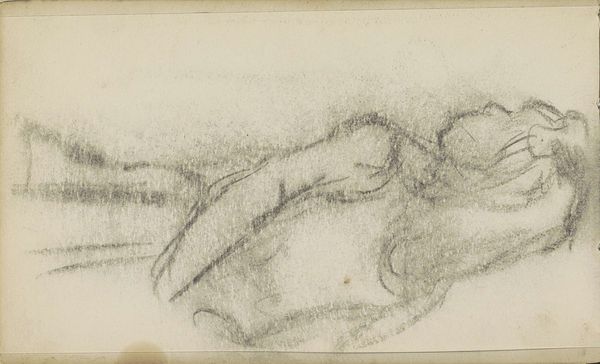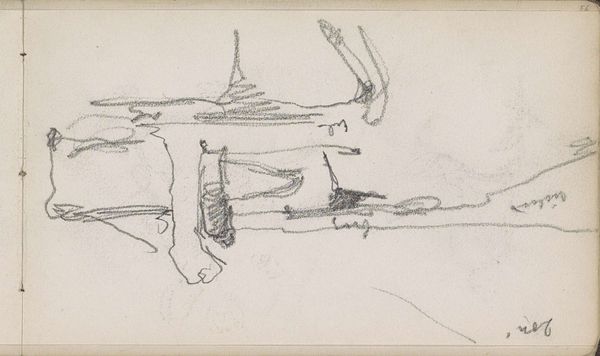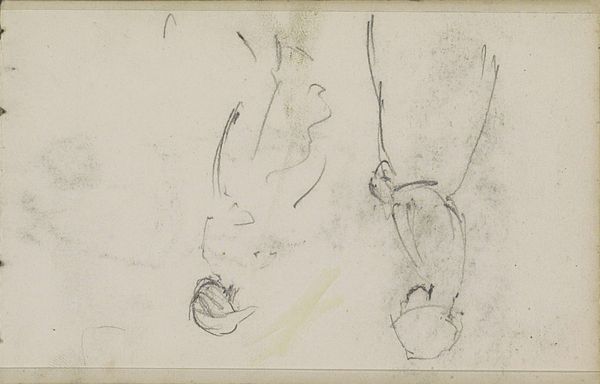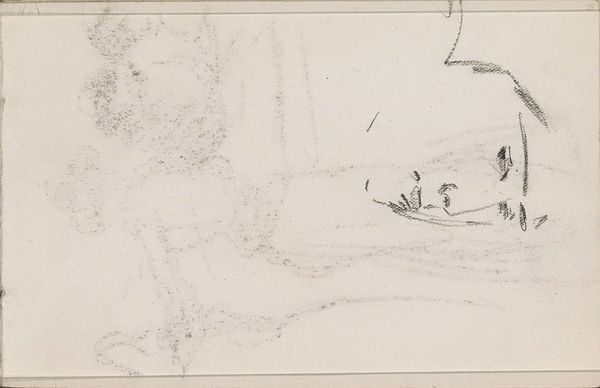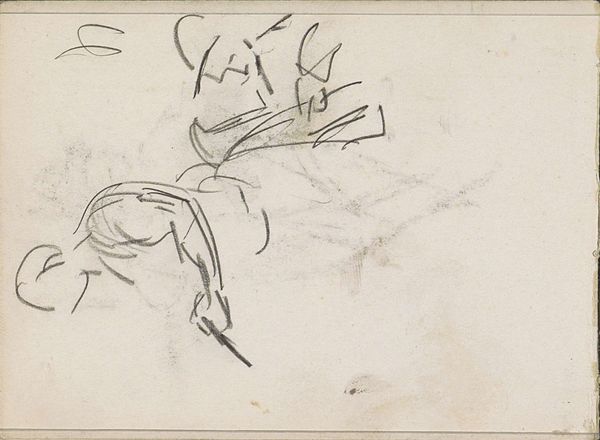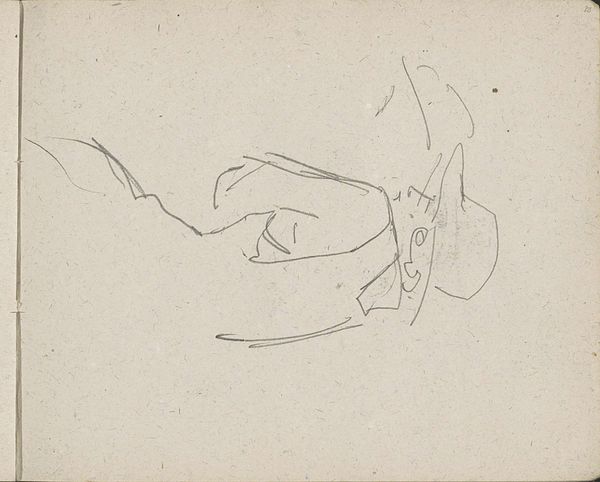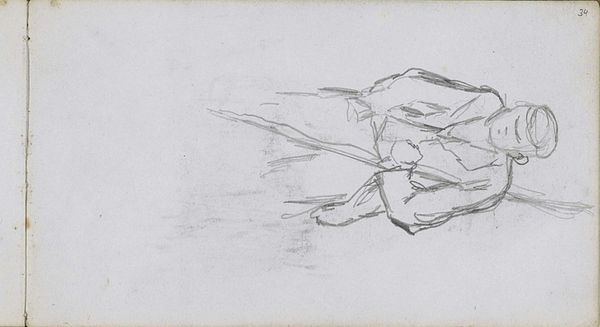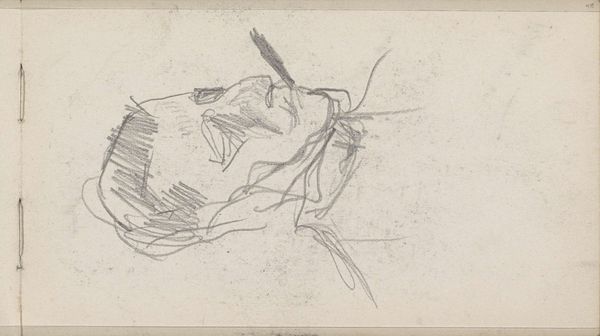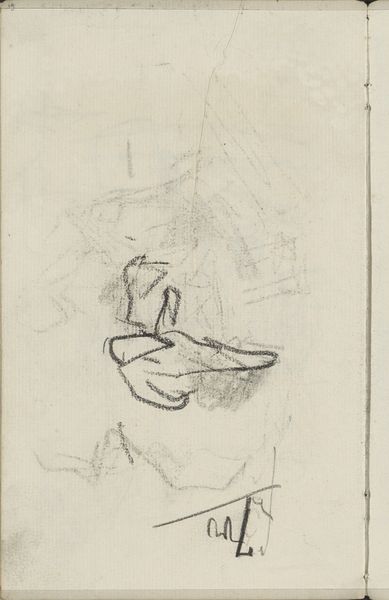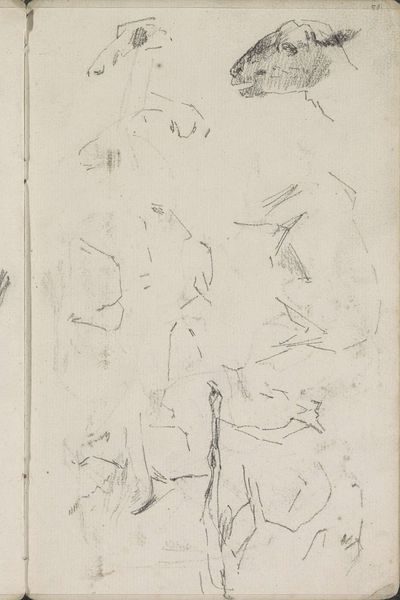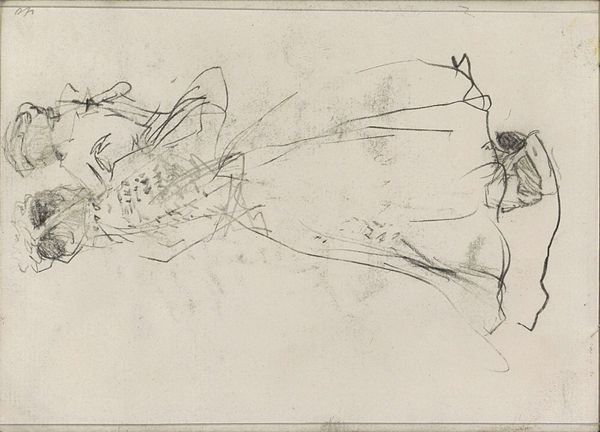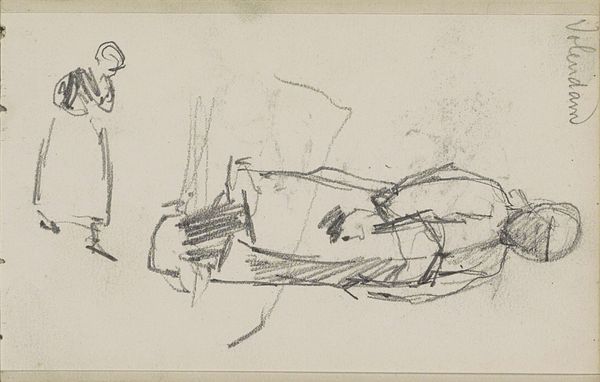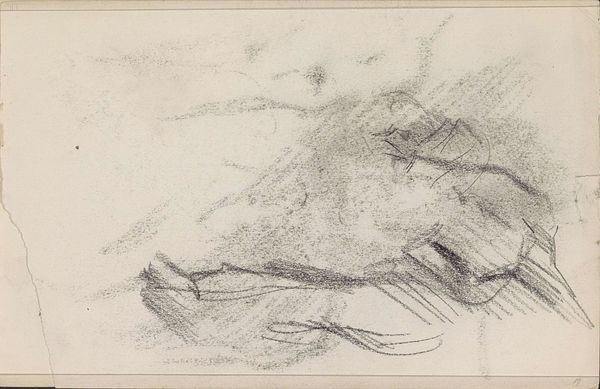
Copyright: Rijks Museum: Open Domain
Editor: Right now, we’re looking at "Onderlijf van een vrouw met rok" by Isaac Israels, a pencil drawing done somewhere between 1886 and 1903. It's a sketch, a glimpse of something fleeting. What strikes you about it? Curator: Fleeting is a perfect word. It’s like catching a half-remembered dream, isn't it? Look how lightly he touches the page. Those barely-there lines… they're almost ghosts of form. Do you get a sense of the woman's movement, even in this fragment? Editor: I do. There's definitely an impression of movement, but the lines also make it seem a bit… unfinished. Like he abandoned it halfway. Curator: Or, perhaps, captured exactly what he needed. Israels, like many Impressionists, was after capturing the essence, not every detail. What do you think the absence of the upper body does to our understanding of the subject? Editor: I guess it focuses our attention on the skirt, on the clothing as form, not just the person. Is there something inherently suggestive or revealing about the absence of the face? Curator: Absolutely! We project our own emotions, our own narratives, onto that absence. The lack of a face makes the subject simultaneously intimate and distant. The mind races to conjure that which the picture has failed to capture. Makes one reflect on portraiture as a concept. Do you like that about it, that creative participation asked of us? Editor: I see what you mean. It makes you stop and wonder, which I like. I appreciate that this unfinished work offers some interesting questions! Curator: Precisely! It's a whisper of a woman, a rustle of fabric, an invitation to complete the story.
Comments
No comments
Be the first to comment and join the conversation on the ultimate creative platform.
